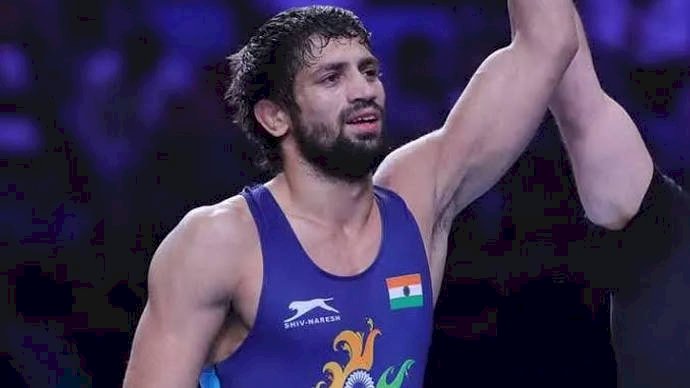Silver lining for a tainted Chhatrasal?
For Printing Download Epaper from files section from bottom of this page

A mobile phone footage from Chhatrasal stadium sends shockwaves through the country. Sushil Kumar, the wrestling centre's most illustrious pupil and arguably India's greatest Olympian with medals in Beijing and London, is seen in a group of people assaulting a junior wrestler, SagarDhankad, who dies soon after. In a few days, Kumar is arrested.
For the modern-day cradle of Indian wrestling, the incident is a dark chapter in what is otherwise a glorious journey. Speculations swirl whether Chhatrasal will ever be the same again. A steady dribble of top players leaving Chhatrasal had already dented its reputation. Kumar's arrest added another blow.
It took a little over three months and an Olympic silver medal by another Chhatrasal ward to show that the institution was far from gone. When Ravi Dahiya rose to the Tokyo Olympics podium with a silver medal in the 57kg category, those watching it on television at the facility in west Delhi must have felt a sense of pride and relief. They had found a new hero.
Tokyo 2020: The moment to build big is here
Dahiya is the centre's third Olympic medallist - another trainee, YogeshwarDutt, had won bronze in London 2012 - and that, for any academy anywhere in the world is an incredible feat.
But the list does not end here. Deepak Punia, who lost his 86kg bronze medal match on Thursday, also started from this academy, as has BajrangPunia - a top medal contender in 65kg. Neither of them train there any more.
For boys from Delhi, as well as the villages and towns that surround the capital who aspire to be wrestlers, Chhatrasal Stadium is the ultimate destination. They live here in cramped quarters packed with fellow wrestlers, living out of duffel bags, sleeping on mattresses lined up on the floor, and eagerly awaiting their fathers bringing them milk, fruits and ghee every morning to supplement their diets--that's the quintessential Chhatrasal life. It's the way Kumar came up, as did Dahiya.
Kumar was 14 when he first came to the stadium in 1997 and started training under 1982 Asian Games gold medallistSatpal Singh. By 2012, Chhatrasal became Indian wrestling's equivalent of La Masia, the famous football academy of FC Barcelona. That year, two of its trainees returned with Olympic medals - Kumar and Dutt. Another trainee, AmitDahiya, became the youngest Indian to compete at the Olympics at 18. He made it to the quarter-finals.

 Active Times
Active Times 
















